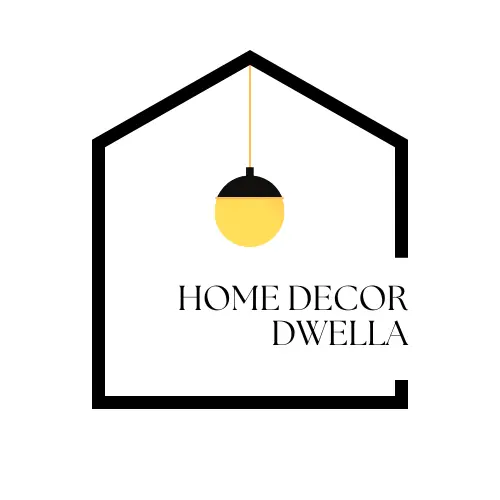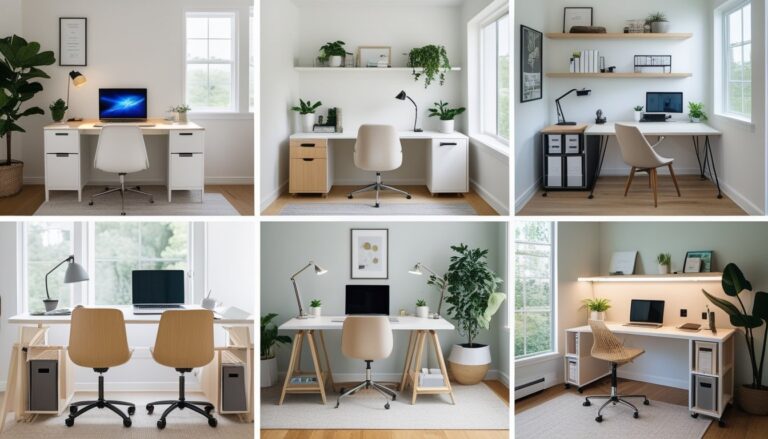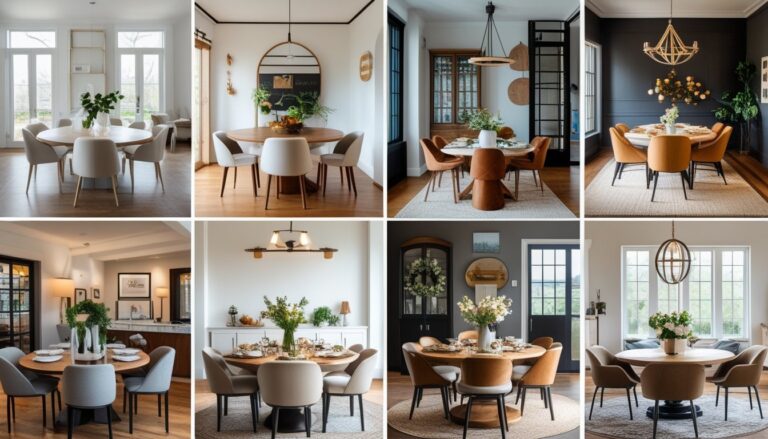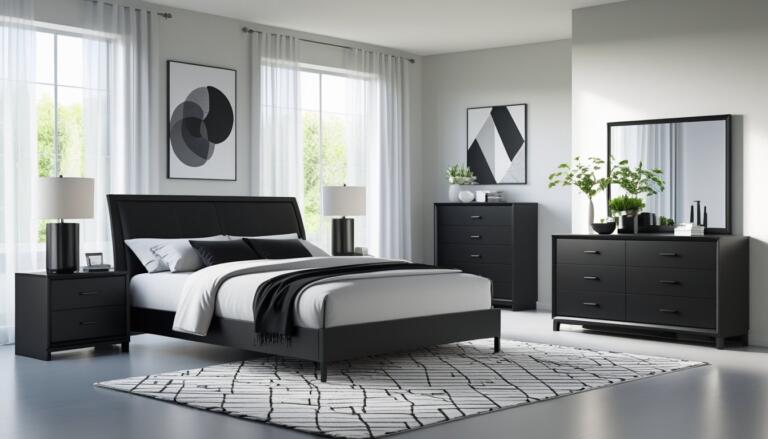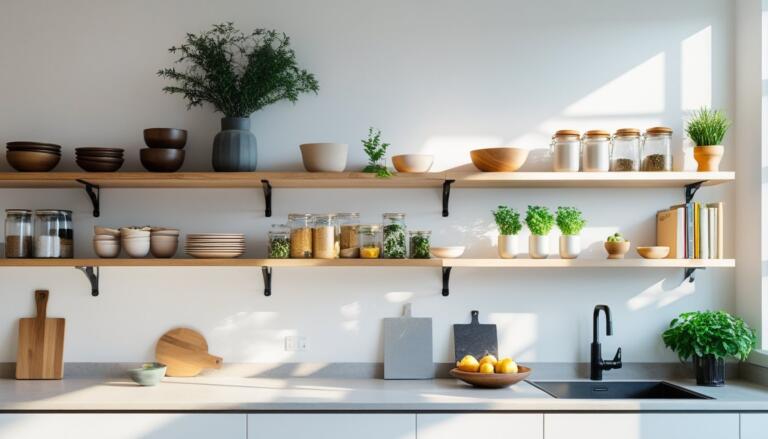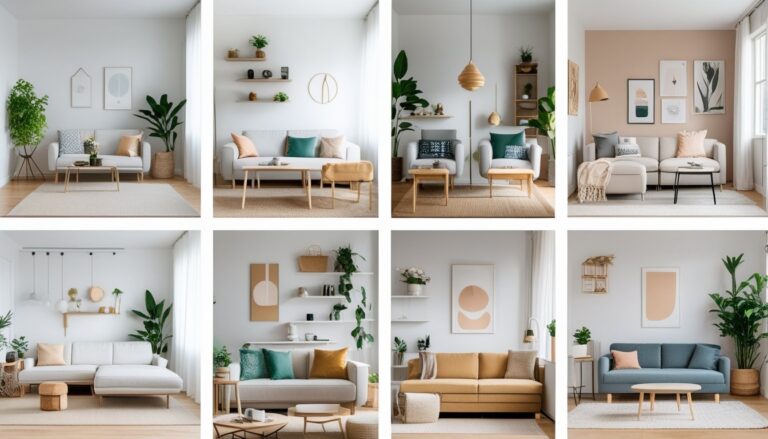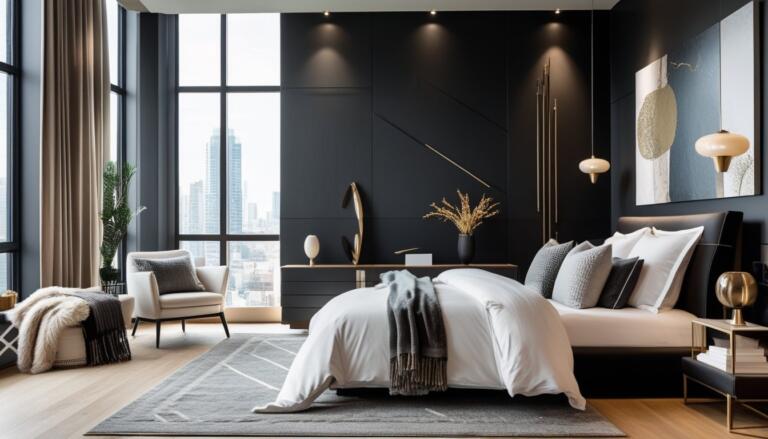Modern Interior Design Living Room : 8 Essential Tips for a Sleek Space
Modern interior design for living rooms focuses on simplicity, function, and clean lines. It often includes natural materials and neutral colors to create a calm and organized space. The style aims to make the room both comfortable and visually appealing without unnecessary clutter.
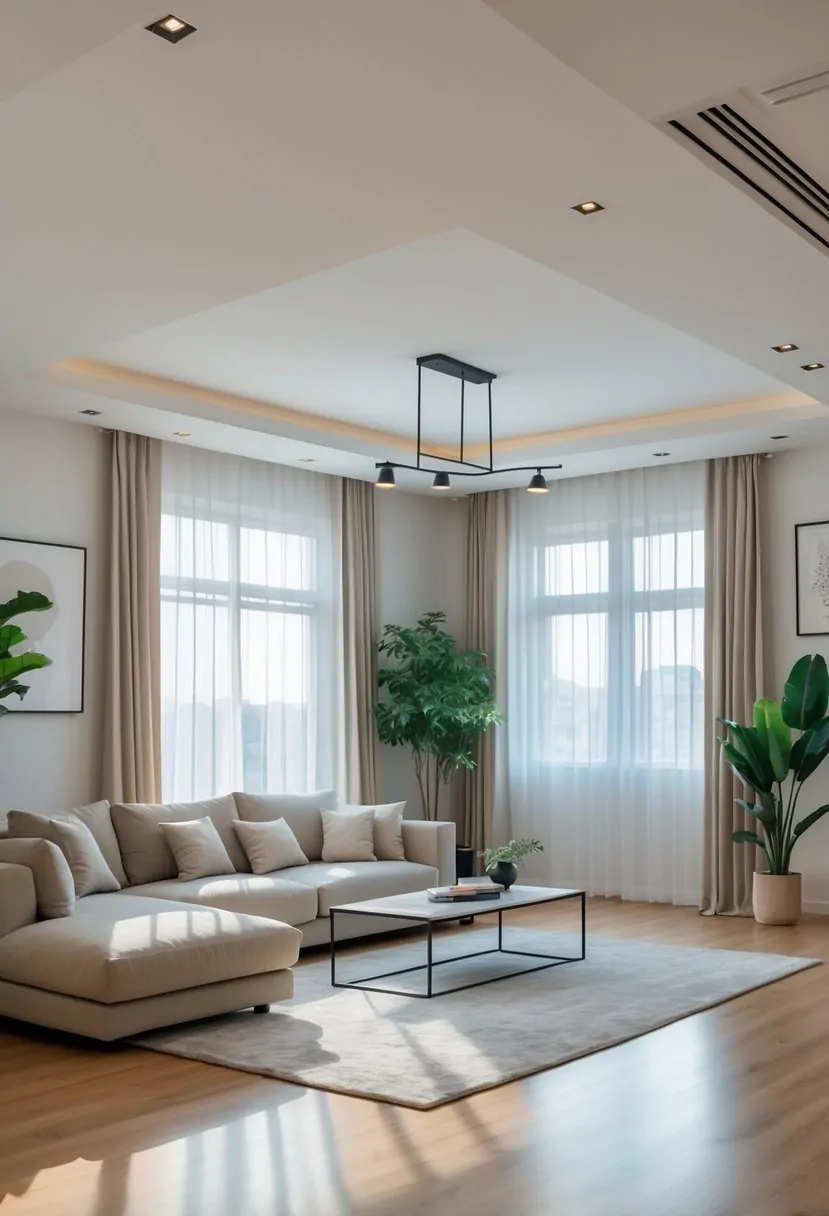
Modern living room design combines practicality with aesthetic appeal, making the space inviting and easy to live in. This style reflects current trends while also drawing from past influences like midcentury modernism. It works well for a wide range of tastes and home layouts.
1) Incorporate slim, streamlined sofas for a sleek modern look

Slim, streamlined sofas help create a clean and uncluttered living room. Their simple shapes add style without overwhelming the space.
These sofas often feature straight lines and low profiles, fitting well with modern design’s focus on function and flow.
Choosing neutral tones for the sofa enhances the room’s open, airy feel while keeping the look sophisticated and calm.
2) Use natural materials like wood and stone for warmth and texture

Wood and stone add natural warmth to a modern living room. Their textures create a sense of comfort and depth.
These materials bring a timeless quality that balances sleek modern designs. Wood’s grain and stone’s roughness add subtle variation to surfaces.
3) Opt for functional layouts that maximize space and flow
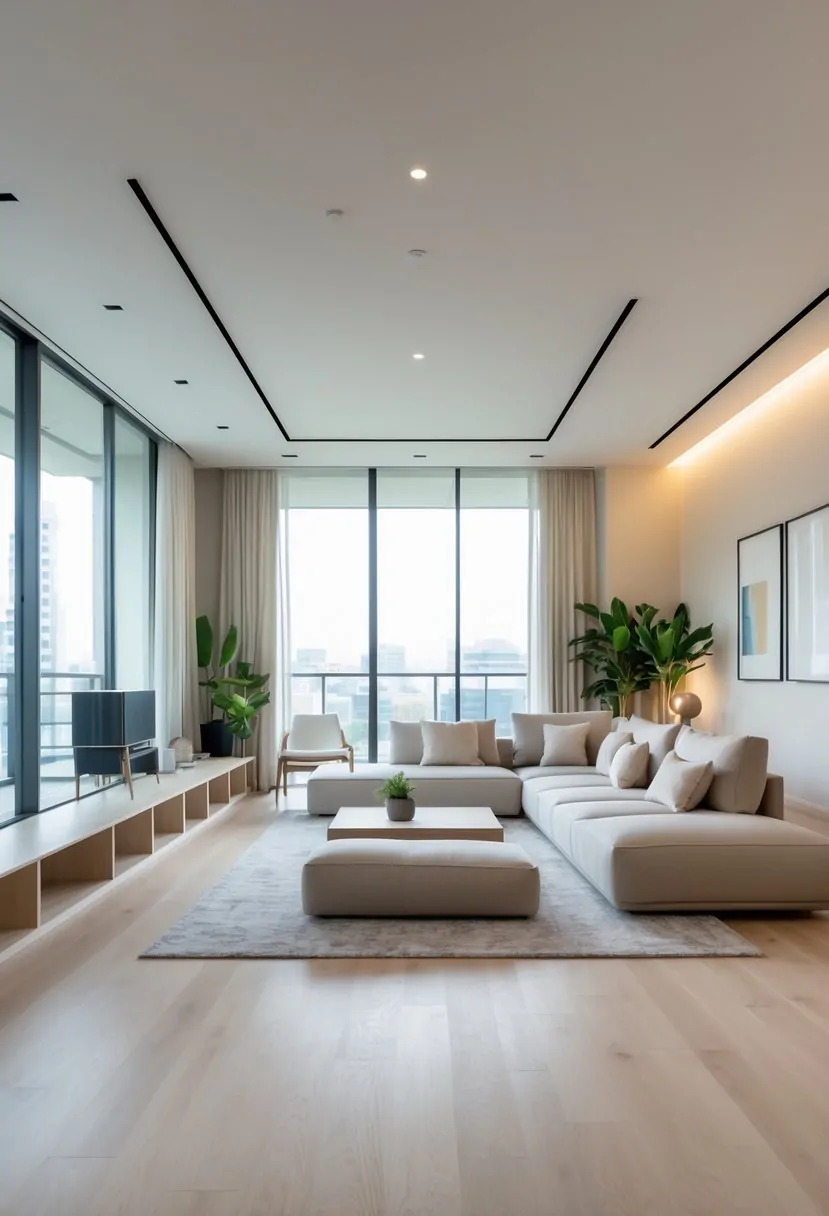
A good living room layout helps make the most of the available space. It allows easy movement and creates clear paths between furniture. This improves comfort and usability.
Choosing a layout that fits the room shape and size supports a balanced flow. It avoids overcrowding and keeps the space open and inviting.
4) Add abstract artwork as a focal point in the living room
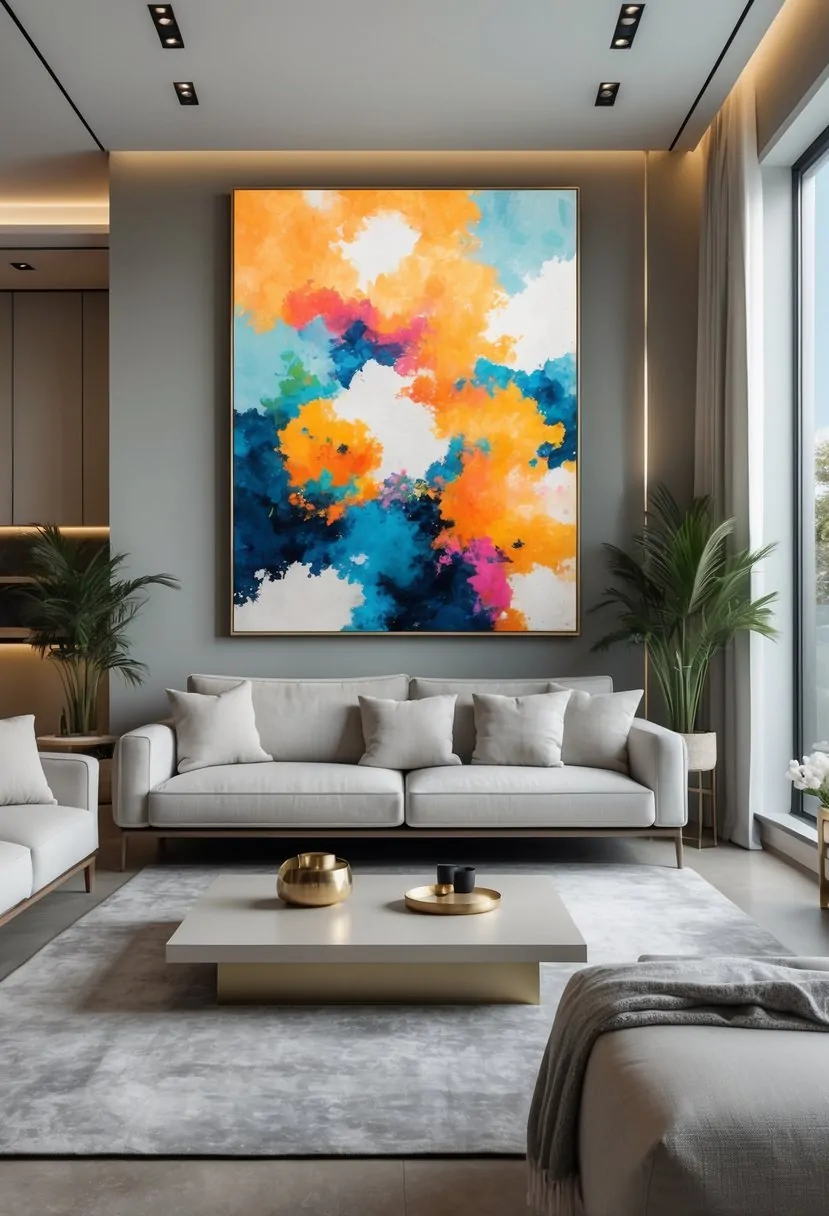
Abstract art can create a strong focal point in a modern living room. It adds color, texture, and shapes that draw the eye. This helps anchor the space and gives the room a clear style direction.
When placed well, abstract artwork balances other design elements. It can turn a simple wall into a centerpiece without overwhelming the room.
5) Choose minimalist decor to maintain clean, uncluttered surfaces
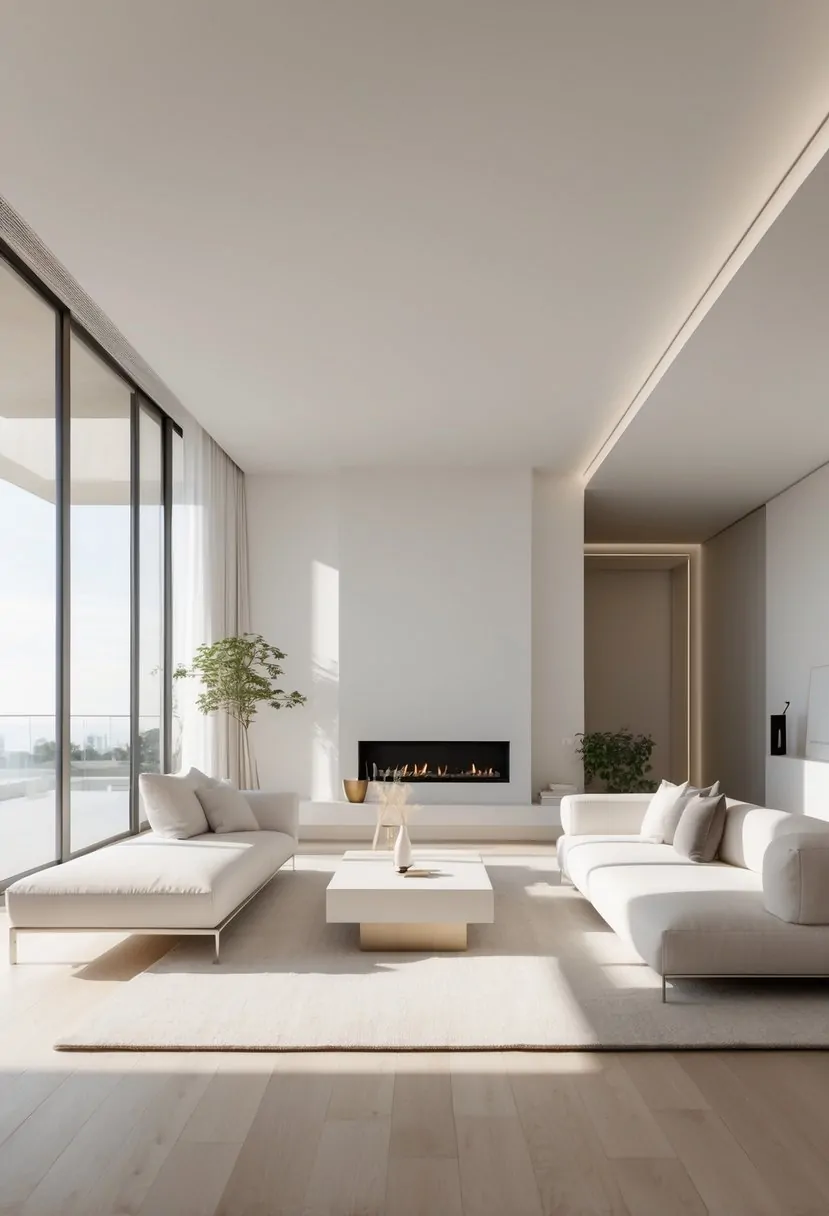
They select simple decor that adds style without creating clutter.
Furniture with clean lines and hidden storage helps keep surfaces clear.
Natural light and reflective finishes enhance the feeling of openness and order.
6) Integrate built-in storage solutions to keep the space organized
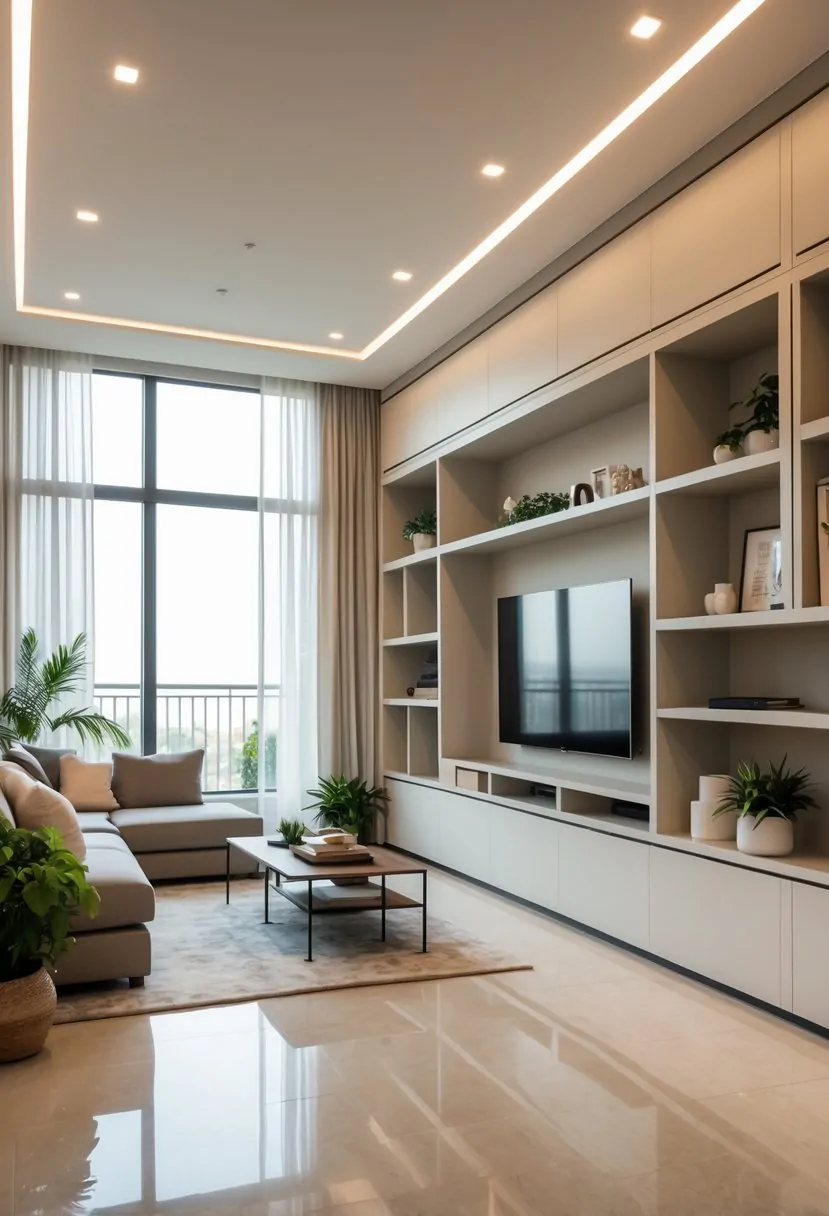
Built-in storage helps keep the living room tidy by providing dedicated space for items. It combines storage and display, making the room both functional and visually neat. This approach fits well in modern design by maximizing space without crowding.
7) Select neutral color palettes with occasional bold accents
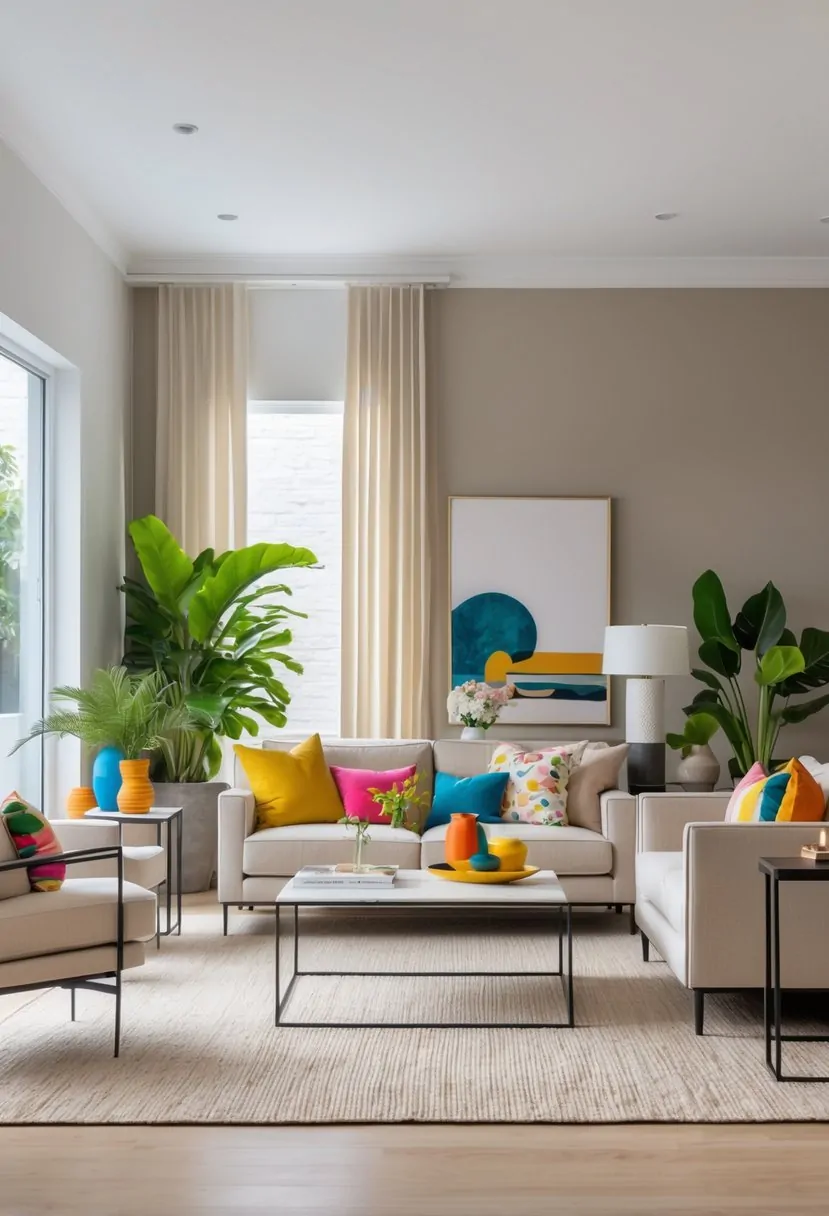
Modern living rooms often use neutral colors like white, gray, and beige as the base. These shades create a calm, flexible space.
Adding bold accents in colors like mustard yellow or teal brings interest without overwhelming the room. This balance keeps the design fresh and modern.
8) Employ lighting fixtures with simple, geometric designs
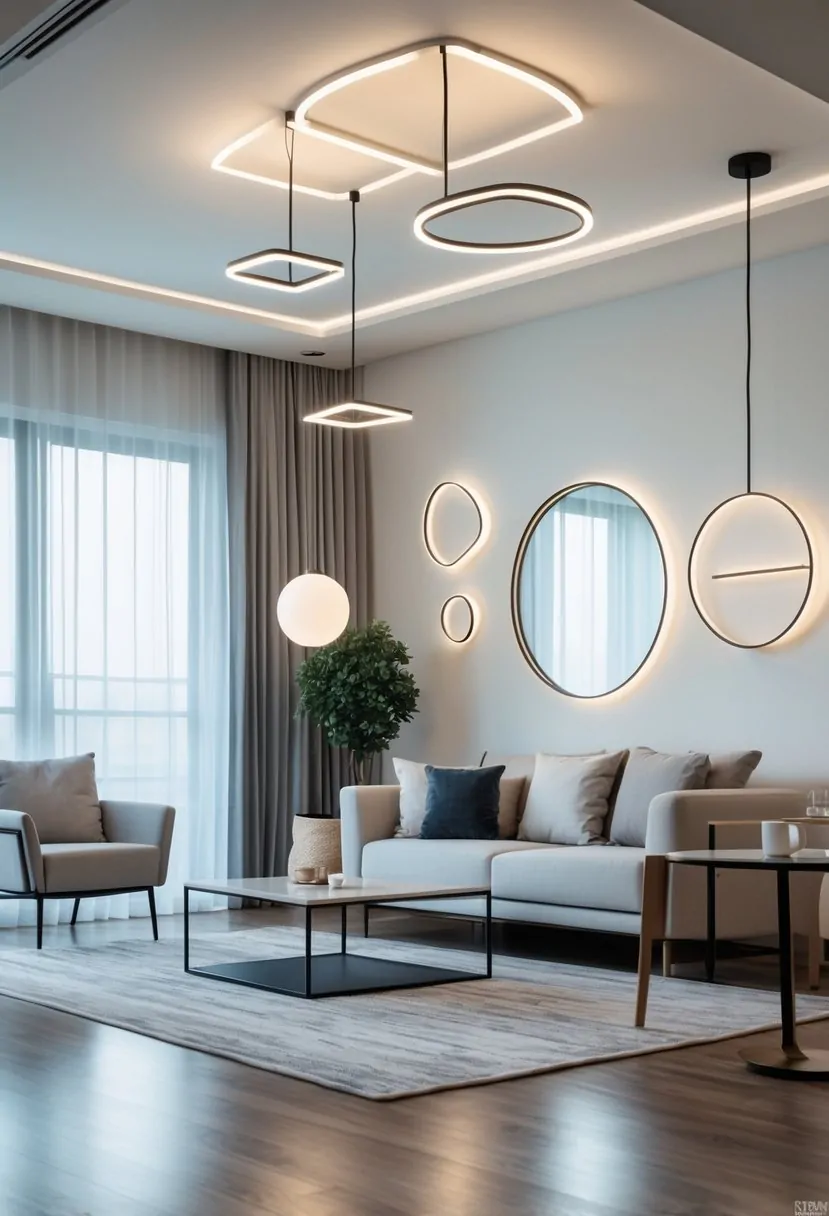
He or she can use lighting fixtures with shapes like circles, squares, or triangles. These simple forms fit well in modern living rooms. They add style while keeping the space clean and uncluttered. Geometric lighting creates subtle interest without overwhelming the room.
Fundamental Elements of Modern Living Room Design
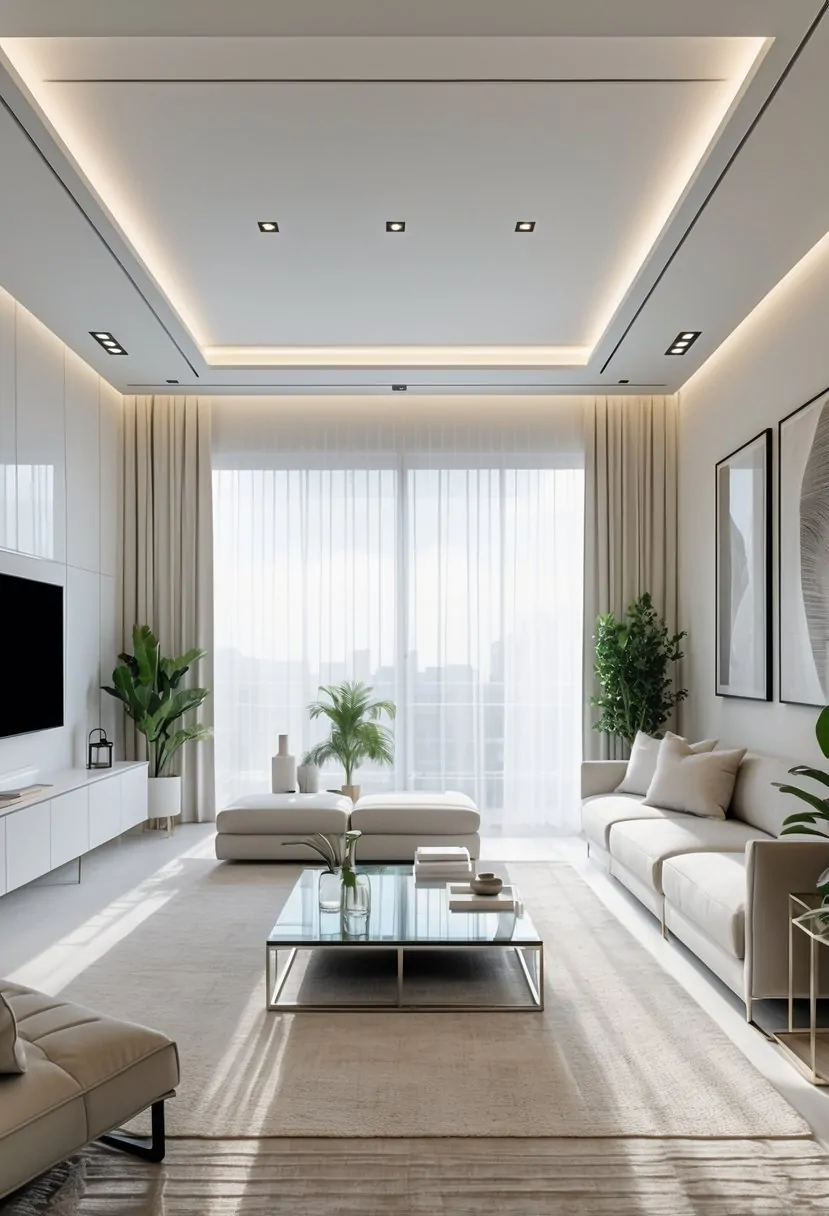
Modern living rooms focus on simplicity, balance, and function. They use clean lines, natural light, and carefully chosen colors and materials. Arranging furniture thoughtfully helps create an open, welcoming space that works well for both relaxing and socializing.
Color Palettes and Material Choices
Modern living rooms often use neutral colors like white, gray, beige, or black as a base. These colors create a calm and clean backdrop. Accent colors are usually subtle, such as muted blues, greens, or earth tones, which add warmth without overwhelming the room.
Materials play a key role. Natural materials like wood and stone are common, often combined with metals like steel or aluminum for contrast. Fabrics tend to be simple, like cotton or linen, which support the sleek, uncluttered look. Matte finishes are favored over shiny ones to keep the mood soft and inviting.
Lighting Strategies
Lighting in modern living rooms should be both functional and atmospheric. Large windows for natural light are important, highlighting the room’s colors and textures. When natural light is limited, layered artificial lighting takes over.
This means combining overhead lights, such as recessed or track lighting, with floor and table lamps. Adjustable fixtures help create different moods throughout the day. Using LED bulbs offers energy efficiency and a range of color temperatures to set the right tone.
Furniture Layout Principles
Furniture in modern living rooms is arranged to maximize space and encourage easy movement. Typically, pieces have clean lines and low profiles to keep the room feeling open. Grouping seating around a focal point like a fireplace or television promotes social interaction.
Spacing is vital—there should be enough room between pieces to walk comfortably. Multi-functional furniture, such as storage ottomans or modular sofas, often fits well in these layouts, supporting both style and practicality. Minimal clutter keeps the focus on the furniture’s form and function.
Enhancing Functionality and Aesthetics
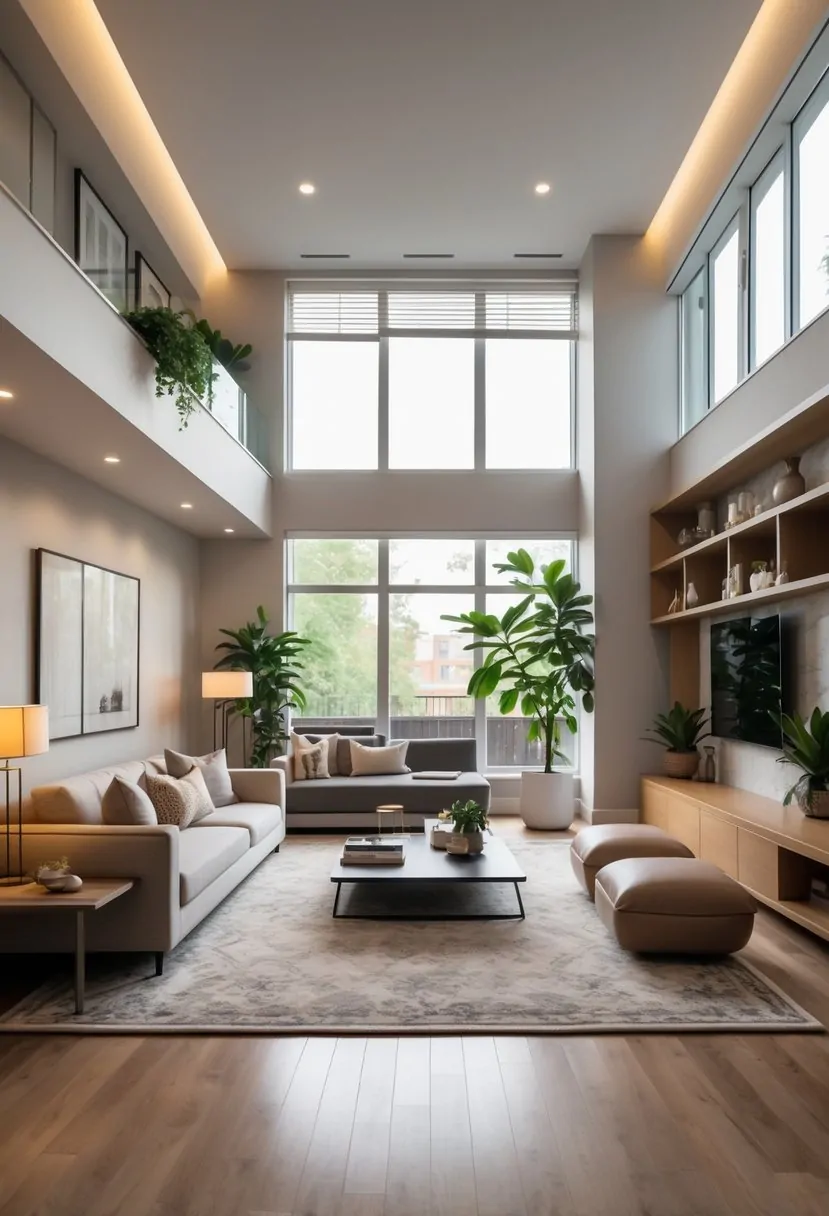
A modern living room should work well for daily use while looking stylish and inviting. Balancing these two parts means choosing smart solutions that save space, improve comfort, and add visual interest.
Integrating Technology Seamlessly
Technology can improve both how a living room looks and functions. Smart lighting allows users to change brightness and color to fit different moods or activities. Built-in speakers and smart TVs can blend into the room without clutter.
Digital art displays add a modern touch by showing changing images, making the walls more dynamic. Voice control systems help manage devices easily. Careful placement of outlets and charging stations keeps gadgets accessible without messy cords.
When done right, technology becomes part of the design, not a distraction.
Maximizing Natural Light
Natural light makes a room feel open and welcoming. Large windows or glass doors are essential in modern living rooms to bring in as much daylight as possible. Using sheer curtains or blinds helps control brightness without blocking light completely.
Mirrors placed opposite windows reflect sunlight deeper into the space. Light-colored walls and furniture also enhance the sense of brightness. Arranging furniture to avoid blocking windows ensures natural light flows freely.
This focus on natural light reduces the need for artificial lighting and boosts a room’s inviting quality.
Blending Minimalism With Comfort
Modern design often favors simplicity, but comfort is just as important. Using clean lines and uncluttered spaces helps create a calm environment. Yet, soft cushions, textured throws, and cozy rugs add warmth.
Furniture should offer good support and fit the space without overcrowding. Multi-purpose pieces, like storage ottomans or sleek shelving, keep the room tidy and useful.
Incorporating natural materials like wood or cotton balances modern minimalism with a lived-in, comfortable feel.
Frequently Asked Questions
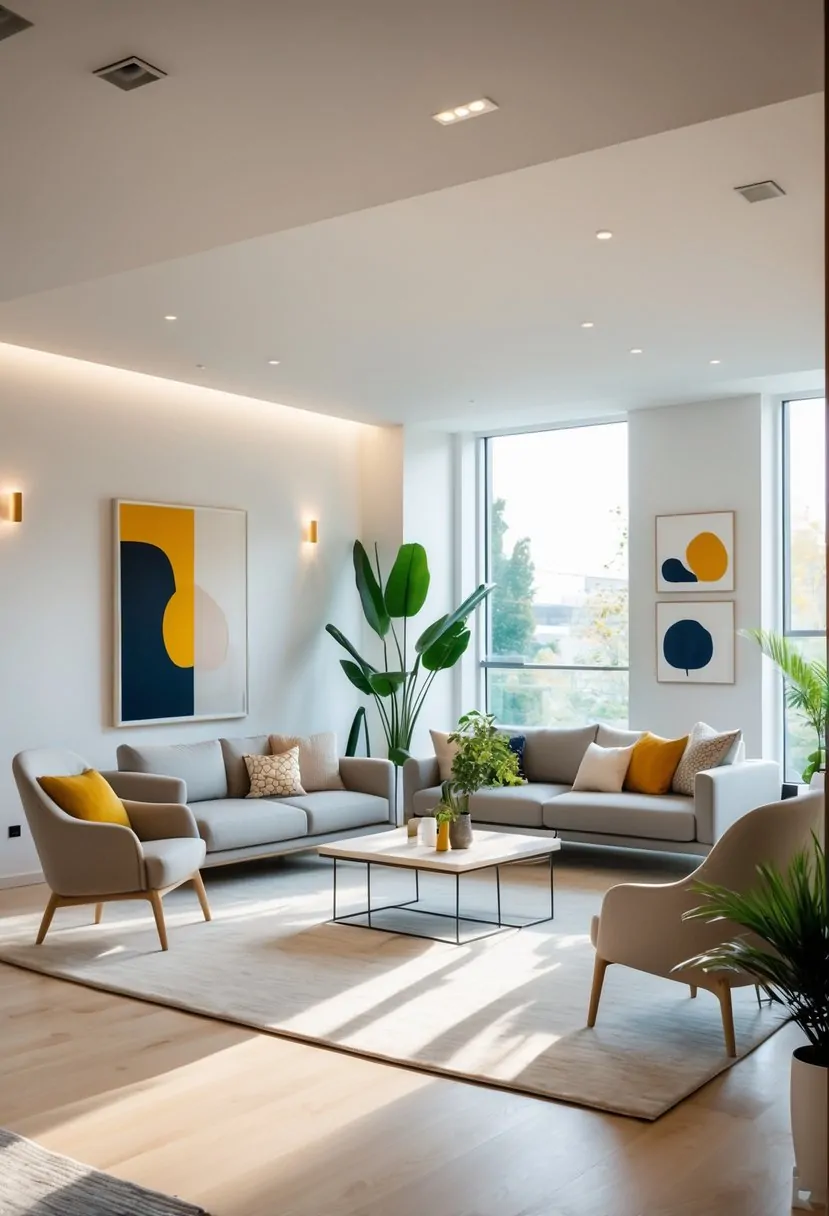
Modern living rooms often use space-saving furniture and natural materials to create a clean and inviting atmosphere. Functional layouts and minimal decor help keep the room open and easy to navigate while giving the space a fresh, modern feel.
How can I make a small living space feel modern and spacious?
Using slim, streamlined sofas can make a room look bigger without sacrificing style. Arranging furniture to allow free movement improves flow and opens up the area.
Natural materials like wood and stone add warmth without cluttering the space. Keeping decor minimal helps maintain a clean, airy look.
What are the latest trends in modern living room wall designs?
Abstract artwork is popular as a focal point because it brings personality without overpowering the room. Neutral wall colors paired with textured materials like wood panels or stone add depth and interest.
Accent walls with subtle patterns or built-in shelving enhance the modern feel while keeping the walls functional.
Where can I find inspiration for modern living room interior designs?
Design websites and social media platforms offer wide examples of modern layouts and decor ideas. Visiting showrooms or reading design magazines helps discover current uses of natural materials and space-saving furniture.
Experts also recommend noting what works in your own space and combining those ideas with minimal, functional elements for a modern look.
